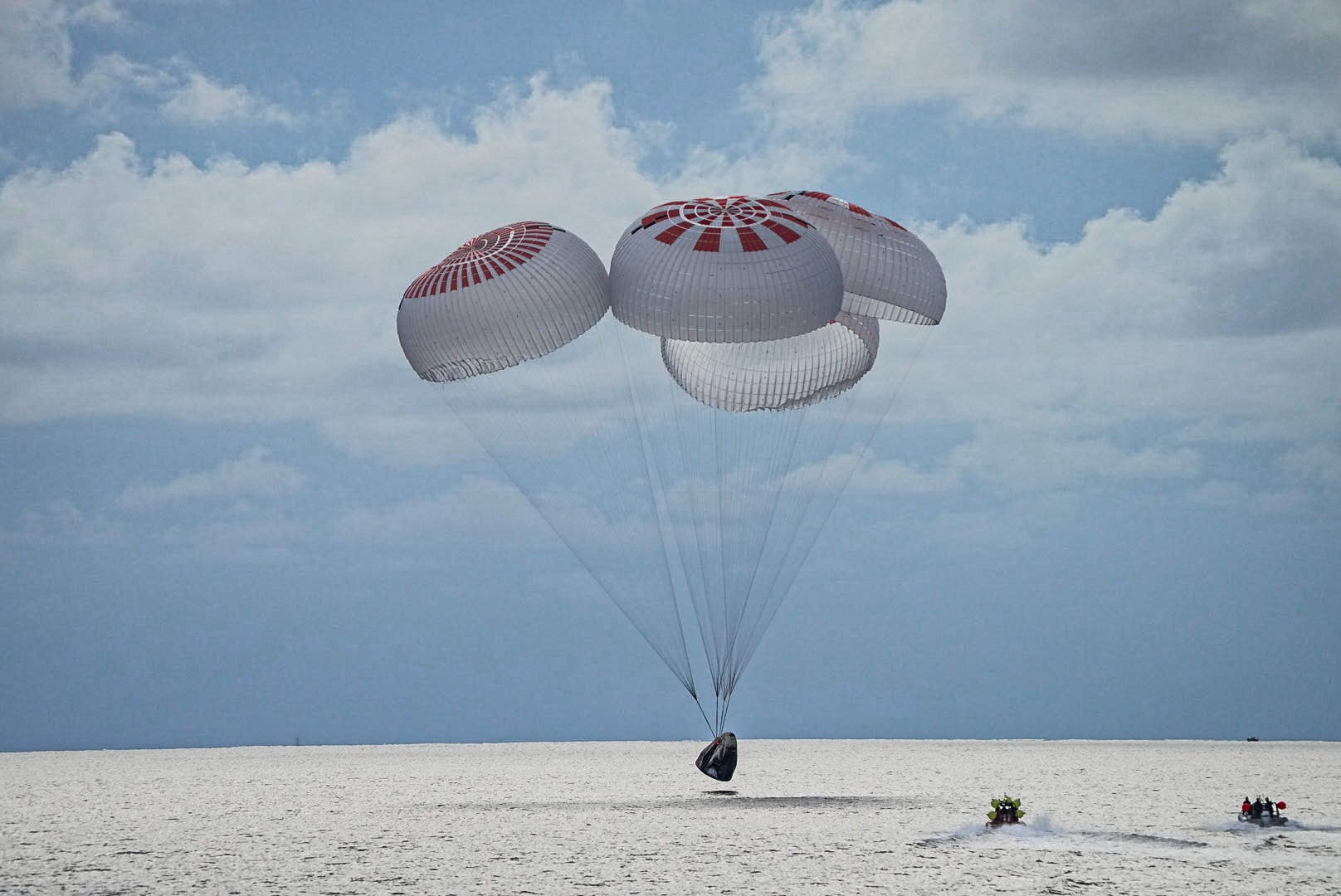
Hawthorne, California-based SpaceX is known for making history. It was the first private spaceflight company to transport astronauts to the International Space Station and the first to develop a reusable rocket booster. On September 18, 2021, the American aerospace company did it again by completing the world's first-ever all-civilian mission to space.
The Crew Dragon capsule, carrying the Inspiration4 crew members, splashed down off the Florida coast at 7:06 p.m, marking the end of its three-day orbit around Earth. The amateur astronauts — 38-year-old tech entrepreneur Jared Isaacman, 51-year-old geoscientist Sian Proctor, 42-year-old aerospace data engineer Chris Sembroski, and 29-year-old physician assistant Hayley Arceneaux— were quickly whisked to Florida's mainland by helicopter.

The quartet lifted off from Cape Canaveral, Florida, shortly after 8 p.m. EDT on September 15, 2021. Within three hours, the spacecraft had reached the final cruising orbital altitude of just over 357 miles (575 km). This is higher than the International Space Station or the Hubble Space Telescope, and the furthest any civilian has traveled above Earth. Crew Dragon circled Earth once every 90 minutes at a speed of 17,000 miles per hour (27,360 kph) — about 22 times the speed of sound.
During their three-day sojourn in space, the amateur astronauts conducted scientific research on how their bodies were adjusting to the zero-gravity environment. They also spent time getting to know one another, chatting with their families, and admiring the spectacular views of Earth from the spacecraft's massive windows. In a live stream shared by SpaceX, Proctor showed off some artwork she had completed in space, while Sembroski was seen strumming a ukelele.
The first-all civilian flight also had a philanthropic mission. Isaacman — who purchased all four seats for an estimated $220 million — used the momentous journey to raise funds for St. Jude's Children's Research Hospital in Memphis, Tennessee. The billionaire kick-started the effort by donating $100 million prior to the launch. An additional $500,000 was raised from the public after the launch. Upon the crew's return, SpaceX founder Elon Musk chipped in $50 million towards the worthy cause.
With the successful completion of the Inspiration4 mission, SpaceX hopes to ramp up its commercial space program to as many as six flights a year. Unfortunately, at least for now, they will be limited to those who can afford to spend millions of dollars on a ticket.
Resources: Space.com, SpaceX.com, CNN.com,
